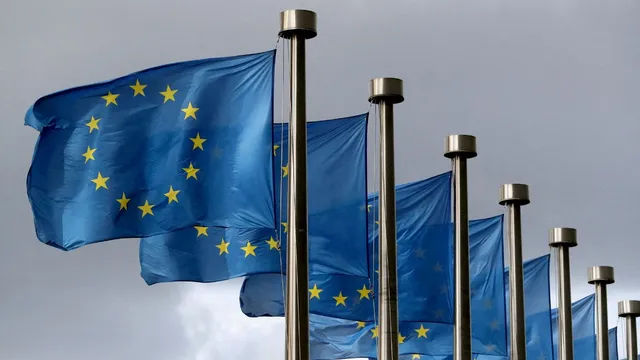- By Alex David
- Tue, 11 Nov 2025 11:13 PM (IST)
- Source:JND
The European Commission is preparing a sweeping new regulation that could mandate the removal of Huawei and ZTE equipment from telecom and broadband networks across all EU member states, marking the bloc’s toughest stance yet on Chinese technology firms.
According to sources quoted by officials familiar with the matter, Vice President Henna Virkkunen of the EU Commission has drafted a proposal that will make its 2020 "high-risk vendor" recommendation legally binding. If passed into law, such legislation would force countries to remove Huawei and ZTE gear from 5G networks while penalising any that fail to abide.
A Push for Unified Network Security Policy
Currently, individual member states determine their telecom infrastructure policies, leading to uneven enforcement of the EU’s existing voluntary framework. Virkkunen’s plan would align all 27 nations under a single cybersecurity standard, giving Brussels stronger oversight of how network equipment is deployed.
ALSO READ: India Post Launches Dak Sewa 2.0 App: A Smarter Way To Access Postal Services Digitally
“The security of our 5G networks is crucial for our economy,” said European Commission spokesperson Thomas Regnier, though he declined to confirm specific legislative details.
This proposal comes amid mounting geopolitical risks posed by Chinese telecom vendors with close ties to Beijing. EU officials worry that dependence on Chinese suppliers could expose Europe's communications infrastructure to espionage or state interference, especially during geopolitical crises.
Expanding Beyond Mobile Networks
The draft legislation reportedly goes further than earlier recommendations by considering restrictions not only on mobile networks but also on fixed-line broadband infrastructure — an area where Huawei and ZTE still maintain a strong presence as countries expand fibre coverage.
The plan could also curb EU development financing for overseas projects that rely on Chinese equipment. Under the Global Gateway initiative, which funds infrastructure in non-EU countries, Brussels may withhold funding from projects using Huawei gear — part of its broader effort to reduce global dependence on Chinese technology.
Background: From “Toolbox” to Enforcement
The move builds on the EU’s 2020 5G Security Toolbox, a framework designed to guide countries in securing telecom networks. While the toolbox encouraged member states to limit the role of “high-risk vendors”, it left enforcement optional.
That approach resulted in fragmented implementation.
- Nations like the UK and Sweden have already banned Huawei outright.
- Others, including Spain, Greece, and Hungary, continue to allow Chinese vendors in parts of their networks.
Brussels’ new proposal aims to close these regulatory gaps by imposing a unified policy and clear deadlines for compliance.
Industry Reaction and Political Resistance
The proposed ban is expected to face political pushback from certain EU members and telecom operators. Many have long argued that Huawei’s equipment offers better performance and lower costs than Western alternatives.
However, the political environment has altered significantly; closer cooperation between Brussels and Washington under the second Trump administration has created greater pressure for Europe to align its efforts against Chinese influence in critical technology infrastructure.
Following reports of an EU-wide ban, Nokia and Ericsson shares experienced dramatic surges. Nokia rose by 5.0%, while Ericsson gained 3.7% as investors displayed optimism that tightening restrictions against Chinese vendors might increase demand for European-made telecom equipment.
ALSO READ: YouTube Rolls Out New ‘Ask’ Button Powered by Gemini AI: Watch, Learn, And Interact Smarter
A Strategic Message on Digital Sovereignty
For the European Union, this initiative marks more than a technical policy shift – it's an assertion of digital sovereignty. EU officials view secure, independent infrastructure as a top strategic priority in an age when technology increasingly intersects with geopolitics.
If passed, this law would mark an historic shift in Europe's digital security strategy, shifting an earlier voluntary framework into binding regulation that could radically transform the telecom landscape over the coming decade.
Conclusion
The Commission's proposal remains in draft form and must first receive approval by both the European Parliament and member states before implementation can occur. But its message from Brussels is clear: Europe's future connectivity should no longer depend on China.
Whether all 27 EU nations agree to move in lockstep — especially those with existing Huawei partnerships — remains uncertain. What’s certain, however, is that Europe’s patience with Chinese telecom vendors is running out, and the next phase of its 5G journey may be built without them.

